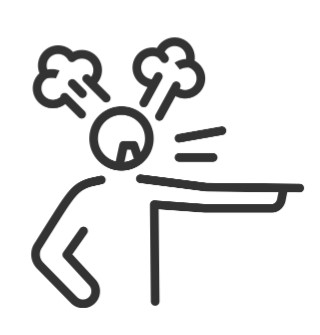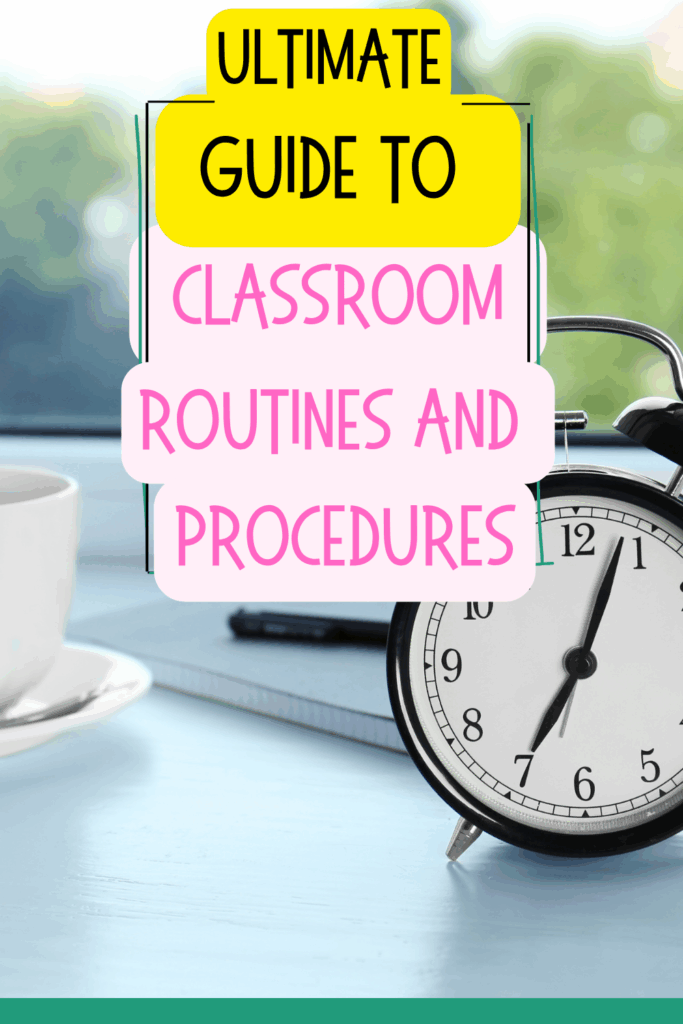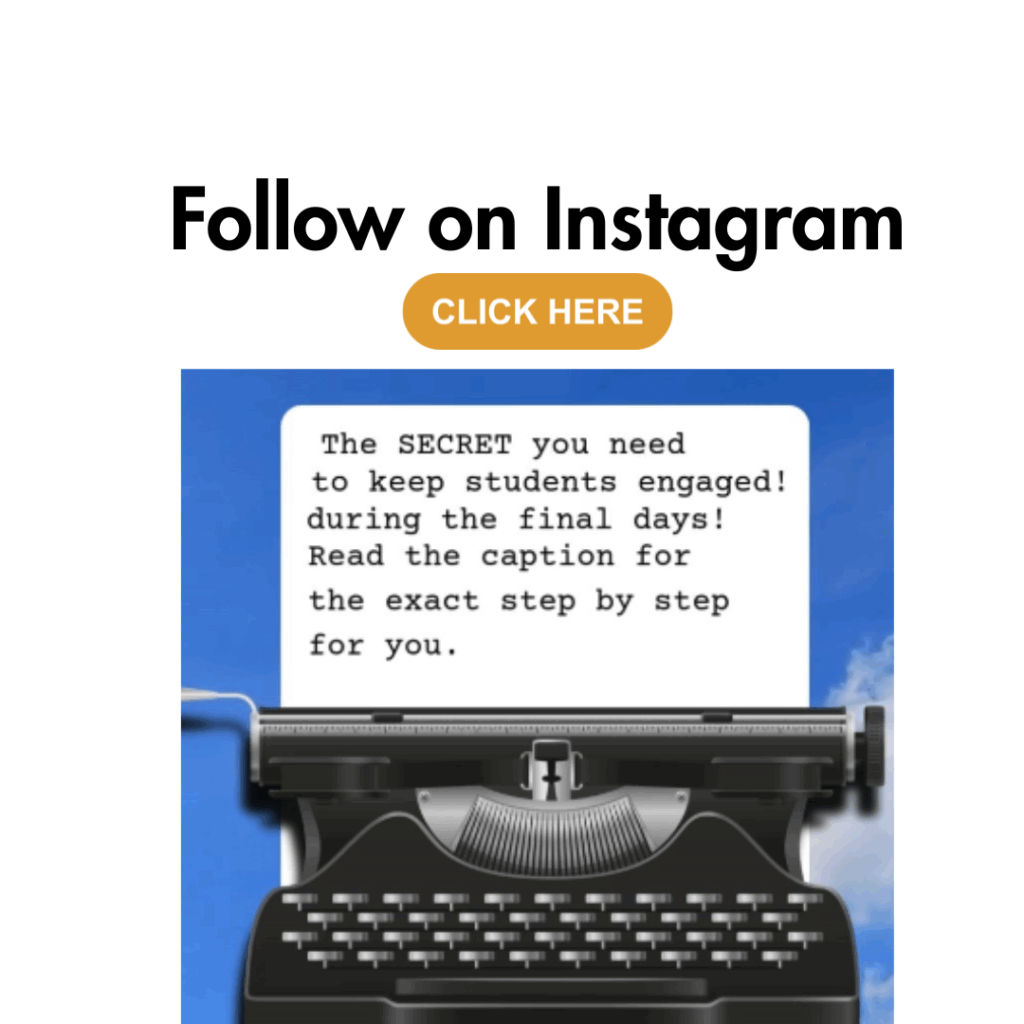If you’re exhausted by repeating directions, correcting behavior, or feeling like chaos erupts the second your back is turned, you’re not alone. It’s not necessarily the content that is overwhelming, it’s the behaviors. The key to calm, confident classrooms isn’t magic. It’s classroom routines and procedures. Establishing them early and teaching them explicitly gives students the structure they need to thrive. In this post, you’ll discover the essential strategies that make classroom management easier from Day One.
What you’ll learn about classroom routines and procedures
- The classroom management definition and how routines fit in
- The answer to: What is the difference between routines and procedures?
- Classroom routines and procedures examples you can use right away
- Proven strategies to teach and reinforce routines from Day 1
What is the definition of classroom management?
Classroom management is the process of creating a learning environment that promotes positive behavior, student engagement, and academic success. This includes setting expectations, reinforcing appropriate behavior, and minimizing disruptions.
When you think of classroom management, you might picture an angry teacher pointing her finger in your face. Classroom management is less about being mean and strict but more about being consistent. A well-managed managed classroom runs on clear expectations, not fear or frustration. That’s where classroom routines and procedures come in.

What is the Difference Between Routines and Procedures?
Let’s break it down:
- Procedures are the step-by-step instructions for how something gets done in the classroom. Think of them as the “how-tos” such as how to turn in homework, how to sharpen pencils, how to ask to go to the bathroom.
- Routines are what those procedures become once they are practiced enough to feel automatic. They’re the rhythm of your classroom.
💡Example: You teach your students the procedure for entering the classroom quietly and starting morning work. After a few weeks of practice, that becomes a routine.
Why it matters: Without procedures, routines don’t exist. Without routines, you’re stuck answering the same questions all year long (and yes you will think about quitting).
What Rules and Procedures Would You Establish at the Beginning of the School Year?
The start of the year is the golden window for establishing expectations. If you wait until October to teach a procedure, it’s much harder to correct and you loose momentum teaching content.
Here are the top classroom rules and procedures to introduce from Day 1:
Must-Have Rules:
- Show respect to others, materials, and yourself.
- Follow directions the first time.
- Be responsible for your learning and behavior.
Click on the image for a free classroom rules poster. ⬇️⬇️

Essential Procedures:
- Entering the room
What should students do as soon as they walk in? - Asking for help
Do they raise a hand? Use a card? Wait until independent work time? - Turning in assignments
Where do finished papers go? What about incomplete work? - Transitioning between activities
Teach clear cues for attention (countdown, call-and-response, timer). - Bathroom and water breaks
Set expectations early—when, how, and how often.
I love using Google slides to reinforce expectations.

Pro Tip: Don’t assume students know how to do even the simplest tasks. Model everything. Then practice. Then review. Then review again.
What Are the Big Five Classroom Procedures?
While every classroom is unique, there are five high-impact procedures that can make or break your year. These are known as the Big Five:
- Arrival routine – How students begin their day sets the tone for everything else. Quiet entry, unpacking, and morning work should be consistent.
- Attention signal – Whether it’s a clap-back, bell, or countdown, your students need a reliable cue that means stop and listen.
- Paper passing and collection – Avoid wasted time by teaching students how to distribute and collect materials efficiently.
- Group work expectations – How should students collaborate, speak to one another, and stay on task?
- End-of-day dismissal – Dismissal chaos is real. Teach an orderly cleanup and pack-up process that doesn’t undo your whole day’s hard work.
Classroom Routines and Procedures Examples
| Situation | Procedure Example | Routine Results |
| Morning Arrival | Hang backpack, turn in folder, begin bellwork | Students enter quietly and get started |
| Sharpening Pencils | Use one “sharp” and one “dull” cup system during non-instruction | No interruptions during lessons |
| Bathroom Breaks | Use a laminated hall pass by placing it on your desk | Students learn independence and boundaries |
| Asking for Help | Show “peace sign” on desk as quiet help signal | Teacher can help without disrupting others |
| Clean-Up Time | Timer set for 3 minutes, music plays during transition | Students move quickly and with purpose |
Why It All Matters
Strong classroom routines and procedures are about more than behavior. They’re about trust. When students know what’s expected of them, they feel safe. That safety opens the door to deeper engagement and learning.
And here’s the best part: once routines are in place, your classroom almost runs itself.
Conclusion: Make Thinking Visible
Teaching classroom routines and procedures isn’t something you get out of the way in the first week. It’s something you reinforce all year long. But the more consistent you are at the beginning, the less you’ll need to correct later.
In other words: model, model, and model more. Practice like you’re on repeat. Then watch your classroom transform into a calm, confident, learning-ready space.
Want an easy way to get started? Check out the Back to School Routines and Procedures Slides for 3rd–5th grade. It includes:
✔ Editable common routine and procedures slides
Click on the image for more details! ⬇️⬇️⬇️

Additional Resources to add to your toolbox
Use Visual Cues to Enhance Learning
How to Differentiate Reading Instruction
How to Establish Classroom Routines for Productive Learning
Favorite items to support error analysis
*As an affiliate, I may earn a small commission if you purchase through this link at no extra cost to you. I only recommend resources I truly trust for the classroom!


